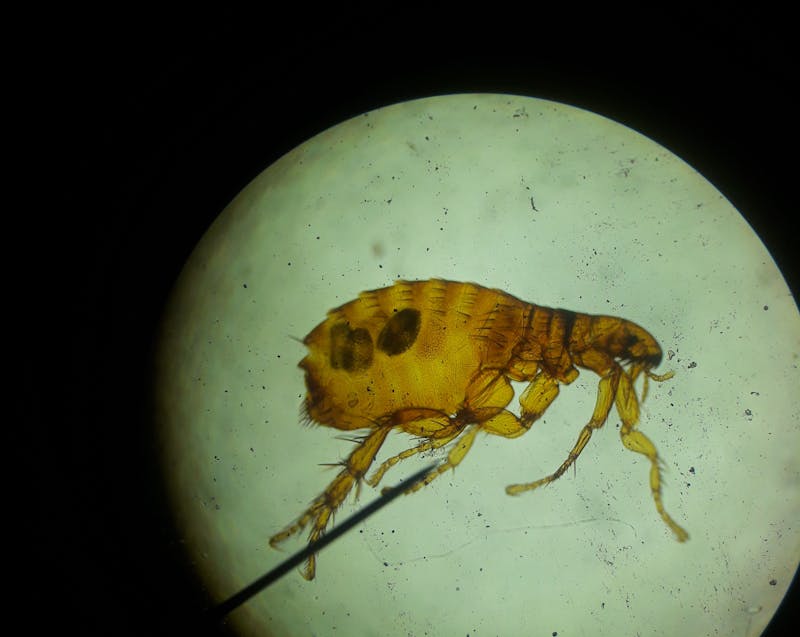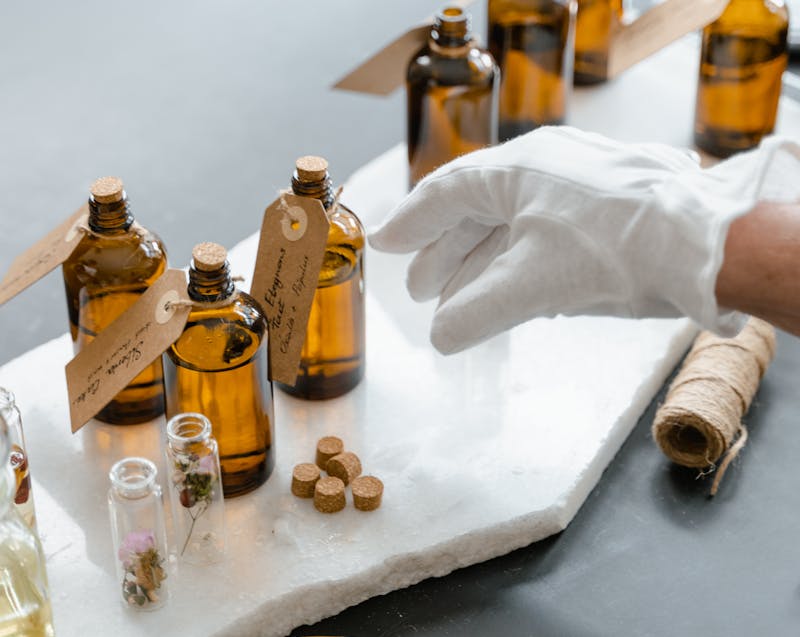- Boric acid is effective for pest control but poses health risks to pets through ingestion, inhalation, or skin contact.
- Cats are especially vulnerable due to their grooming habits and smaller body size, making exposure more dangerous.
- Symptoms of boric acid poisoning include vomiting, diarrhea, drooling, lethargy, tremors, and in severe cases, seizures.
- Even with precautions, using boric acid in pet-friendly homes is risky; safer alternatives are recommended.
- Pet-safe pest control options include food-grade diatomaceous earth, vinegar, enclosed traps, and preventive cleaning practices.
For many households, pest control is a necessary part of maintaining a clean and healthy living space. Ants, roaches, and other insects can quickly take over kitchens, basements, or outdoor areas if left unchecked. One common solution people turn to is boric acid—a substance widely used in insecticides and cleaning products. But if you share your home with a dog, cat, or other furry friend, the big question arises: Is boric acid safe for pets?
This article provides a comprehensive look at boric acid, how it works, the potential risks it poses to animals, and safe alternatives for pest control. As a pet owner, your top priority is balancing household cleanliness with your pets’ health. By the end, you’ll have the knowledge you need to make informed decisions about whether boric acid belongs in your home.
What is Boric Acid and How Does It Work?
Before diving into safety concerns, it’s important to understand what boric acid is and why it’s so commonly used.
Boric acid is a naturally occurring compound derived from boron. It appears as a white, powdery substance and is commonly used in:
- Pest control products (ant and roach killers).
- Antifungal treatments (for humans).
- Cleaning solutions.
- Certain industrial applications.
When used against pests, boric acid works by dehydrating insects and disrupting their digestive systems. Once ingested, it damages the stomach lining of ants, roaches, fleas, and other insects, leading to death. Because it’s relatively inexpensive and highly effective, many homeowners keep it in their cleaning or pest-control toolkit.
But while boric acid is considered “low toxicity” to humans when used correctly, the story is different for pets. Cats, dogs, and small animals have different metabolic systems and exposure risks, making boric acid a potential hazard.
Can Boric Acid Kill Fleas on Pets?

Some pet owners wonder if boric acid can double as a flea treatment, especially since it is often marketed as an insecticide. While boric acid can kill fleas by dehydrating them, it should never be applied directly to your pet’s fur or skin. Doing so can cause irritation, ingestion during grooming, or even poisoning. If fleas are the problem, there are far safer methods available.
Safer Alternatives for Flea Control
- Veterinarian-approved flea treatments: Prescription or over-the-counter topical and oral medications are the safest and most effective.
- Regular grooming: Frequent bathing with pet-safe flea shampoos and combing with a flea comb.
- Vacuuming and cleaning: Reduces flea eggs and larvae in carpets and upholstery.
- Washing bedding: Hot water and regular laundering eliminate flea eggs from pet bedding and blankets.
While boric acid might kill fleas in the environment, using it near or on your pet is not safe. Always rely on veterinary guidance for flea infestations.
Is Boric Acid Safe for Pets?
Now to the question at hand: Is boric acid safe for pets? The short answer is no, not entirely. While boric acid is not considered highly toxic in small amounts, it can still pose significant health risks to cats, dogs, and other pets if ingested, inhaled, or absorbed through the skin.
Why Pets Are More Vulnerable
- Curiosity: Dogs and cats often lick, sniff, or paw at new substances around the house.
- Low body weight: Even small doses can have stronger effects on smaller animals.
- Different metabolism: Pets cannot process certain chemicals the same way humans can.
Potential Dangers of Boric Acid for Pets
- Ingestion: Pets might ingest boric acid directly from powders sprinkled around the home, or indirectly by grooming themselves after walking on treated surfaces.
- Inhalation: Fine boric acid dust can irritate the respiratory system.
- Skin contact: Prolonged contact may cause skin irritation or rashes.
Even if boric acid is marketed as a “safe” alternative to harsher pesticides, the potential for accidental exposure makes it risky in pet-friendly households.
Symptoms of Boric Acid Poisoning in Pets
If your pet comes into contact with boric acid, recognizing the signs of poisoning early can make a life-saving difference.
Common Symptoms
- Excessive drooling or foaming at the mouth.
- Vomiting and diarrhea.
- Loss of appetite.
- Lethargy or weakness.
- Tremors or muscle twitching.
- Red or irritated skin (if contact occurs externally).
- Difficulty breathing (if inhaled).
Severe Cases
In higher doses, boric acid poisoning can cause seizures, coma, or even be fatal. While rare, these outcomes underline why it’s not worth the risk of leaving boric acid within reach of pets.
What to Do if Your Pet Ingests Boric Acid
Accidents happen. If you suspect your pet has ingested boric acid:
- Stay Calm: Acting quickly but calmly helps you make better decisions.
- Remove Access: Take your pet away from the area and clean up any remaining boric acid.
- Contact Your Veterinarian Immediately: Describe the situation, how much your pet may have ingested, and their symptoms.
- Call a Pet Poison Helpline: In the U.S., the ASPCA Animal Poison Control Center (APCC) or Pet Poison Helpline can provide guidance.
- Do Not Induce Vomiting Without Guidance: Some toxins can cause more damage if vomited back up. Only follow your vet’s instructions.
Prompt treatment is key. Your veterinarian may recommend activated charcoal, intravenous fluids, or other interventions to reduce absorption and support recovery.
Can Boric Acid Be Used Safely in Pet Homes?
While the risks are clear, some pet owners still consider using boric acid with extra precautions. If you choose this route, here are the critical safety measures:
- Keep Pets Away from Treated Areas: Confine pets until treated areas are fully cleaned and dried.
- Use Enclosed Traps: Opt for boric acid baits housed in tamper-proof containers that pets can’t access.
- Avoid Loose Powders: Never sprinkle boric acid directly on floors or carpets where pets roam.
- Store Securely: Keep boric acid products in sealed containers out of reach.
However, even with these precautions, accidents remain possible. Many veterinarians recommend exploring pet-safe alternatives instead of taking the risk.
Safer Alternatives to Boric Acid for Pest Control

Pet owners have options beyond boric acid when dealing with household pests. Consider these safer alternatives:
Natural Repellents
- Diatomaceous earth (food-grade): Works similarly to boric acid by dehydrating insects but is much safer for pets.
- Vinegar: Effective for cleaning surfaces and repelling ants.
- Essential oils (with caution): Some oils, such as peppermint or cedar, repel pests, but not all are safe for pets. Always verify before use.
Pet-Safe Commercial Products
Many companies now produce pest control products specifically labeled as pet-safe. These often use non-toxic ingredients or enclosed delivery systems that minimize risk.
Preventive Measures
- Keep food sealed and stored properly.
- Regularly clean kitchen counters and floors.
- Seal cracks and entry points where insects can enter.
- Take out the trash frequently.
By combining prevention with safer treatments, you can keep pests under control without endangering your furry companions.
Is Boric Acid Toxic to Cats?
Cats, in particular, are highly sensitive to boric acid exposure. Unlike dogs, cats groom themselves more frequently, increasing the chance of ingesting residues from paws or fur.
Why Cats Are at Higher Risk
- Grooming behavior leads to higher ingestion.
- Smaller body size amplifies toxicity risks.
- Cats metabolize certain chemicals less efficiently than dogs.
Veterinarians strongly advise against using boric acid in households with cats. Even trace amounts left on floors or furniture can accumulate through repeated grooming.
Is Boric Acid Toxic to Dogs?
Dogs are generally larger than cats, which means it may take more boric acid to cause severe poisoning. However, dogs are naturally curious and prone to sniffing or licking substances they encounter.
Risk Factors for Dogs
- Chewing or licking boric acid bait stations.
- Walking through treated areas and licking paws.
- Accidentally ingesting powders left on carpets or floors.
While some sources may suggest that boric acid is “mildly toxic” to dogs, ingestion in significant amounts can still lead to serious health complications.
Is Boric Acid Safe for Small Pets and Birds?
Beyond cats and dogs, households may include rabbits, guinea pigs, hamsters, or birds. For these smaller pets, boric acid poses an even greater risk due to their tiny body weight and fragile systems.
Small Pet Considerations
- Rabbits & rodents: Highly sensitive digestive systems make them extremely vulnerable to toxins.
- Birds: Respiratory systems are delicate, so inhaling dust particles can cause immediate harm.
In multi-pet households, it’s safest to eliminate boric acid completely and opt for alternatives.
How to Pest-Proof Your Home Without Boric Acid
Pest-proofing your home doesn’t have to involve risky chemicals. A holistic approach combines cleaning, sealing, and pet-safe repellents.
Step-by-Step Pest-Proofing
- Seal Entry Points: Use caulk or weatherstripping to close gaps in walls, windows, and doors.
- Store Food Properly: Keep pet food and human food in airtight containers.
- Maintain Cleanliness: Sweep and mop regularly, especially in kitchens and dining areas.
- Fix Leaks: Eliminate moisture sources that attract pests.
- Use Pet-Safe Traps: Sticky traps or enclosed bait stations designed for safety can reduce infestations.
This proactive approach reduces pest presence while maintaining a healthy environment for both people and pets.
The Bottom Line: Should Pet Owners Use Boric Acid?
So, is boric acid safe for pets? The evidence suggests it’s not worth the risk. While it can be effective for pest control, the potential for poisoning, irritation, and accidental ingestion outweighs the benefits in a pet-friendly household.
Instead, pet owners should look to safer alternatives, prioritize prevention, and consult veterinarians or pest control experts for guidance. Your pets rely on you to create a safe home environment, and eliminating toxic substances like boric acid is a major step toward that goal.

